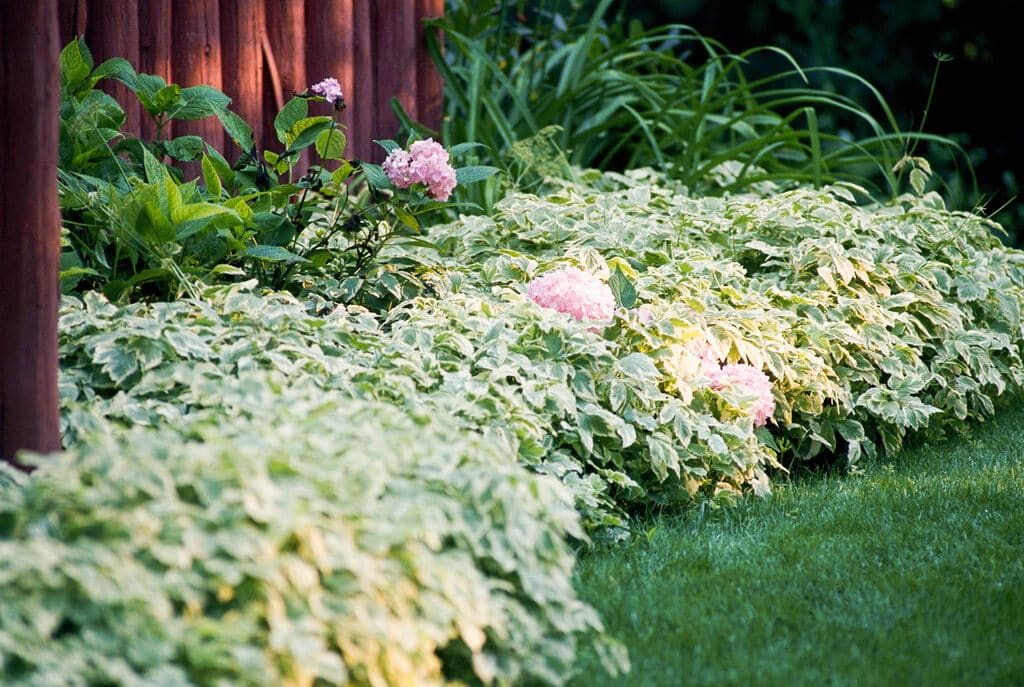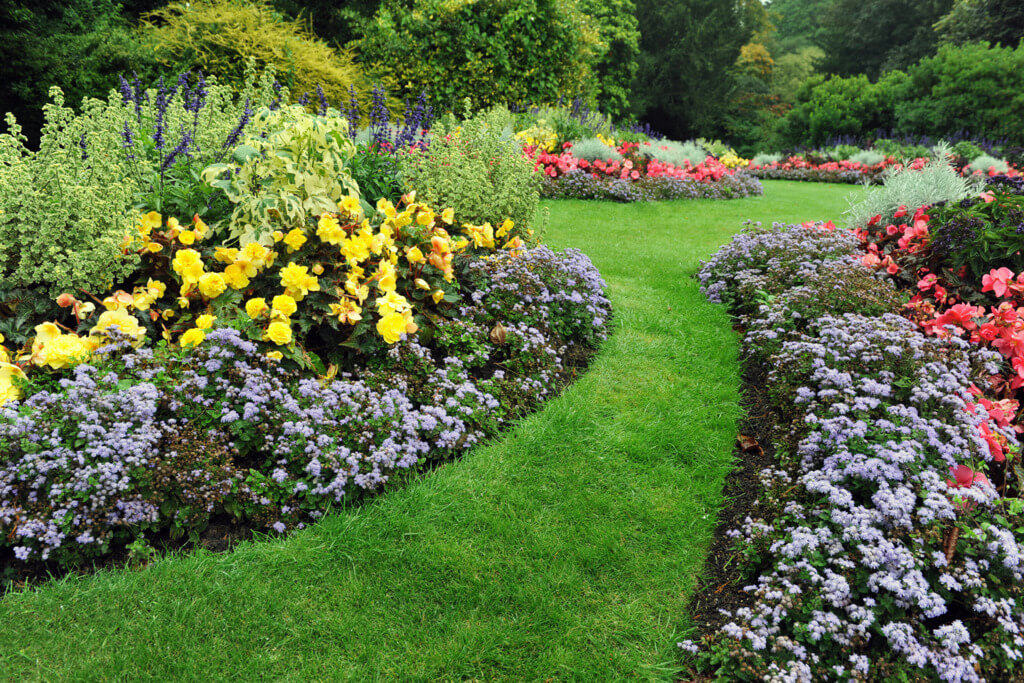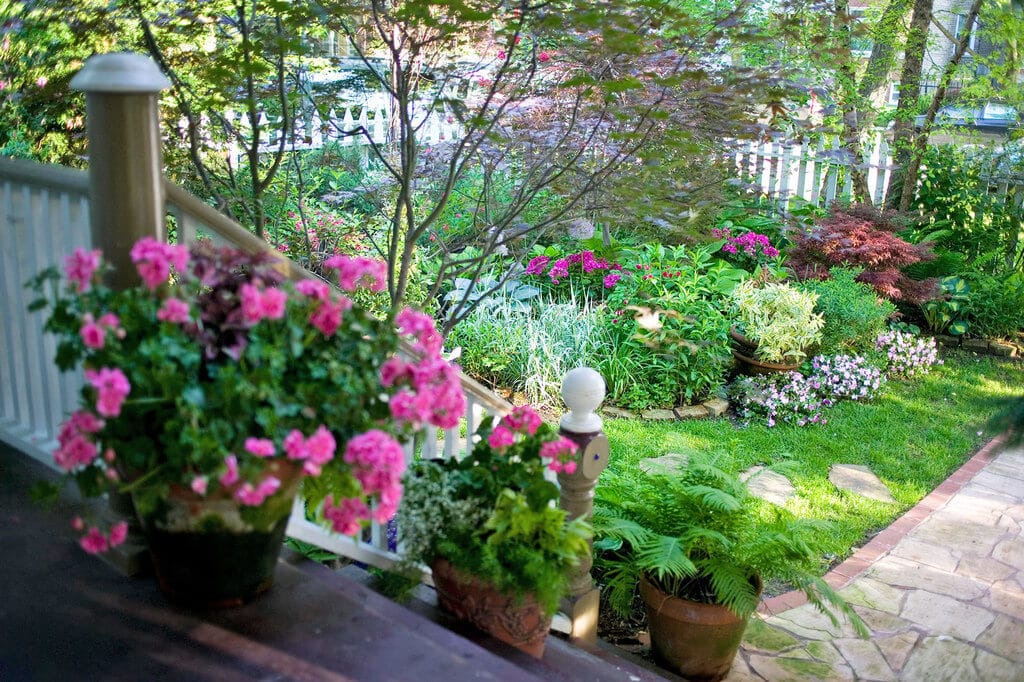Your front yard stands as a symbol of your personality, status, and style. What people see when they first pull into your driveway sets the tone for the experience they’ll have inside your house. The elements that adorn your place may make them eager to frequent it and enjoy the ambiance. Are you planning to landscape your front yard? We have curated a list of essential strategies for landscaping your front yard so that you should implement them in order to get impressive results! In case you are interested in acquainting yourself with some useful information about outdoor furniture, read at Wickerpark.
Use Ground Covering

Cover the Ground Using Grass
Usually, people use normal grass as their ground covers but you can choose your ground covers to be anything from real grass or plastic ground covers. The common trend is to use green grass only, but if you feel that you cannot mow your yard regularly and then go for some artificial plastic grass.
Plan Your Pathway

Make sure to spend an ample amount of time planning your pathway to the house. It is advisable to choose the most direct route. The pathway experience should be smooth and inviting for anyone coming to your house.
A curved path is usually much more good-looking but if you choose that path, make sure to keep it short and plant it with lovely flowers. It is also essential the pathway is well lit for the nighttime.
Keep Size in Mind
Pay close attention to the size. To put it another way, nothing should be too big or too small for the available room. A row of small, colorful flowers on your front lawn would possibly go unnoticed if you have a larger home.
Larger elements and shapes are more noticeable from afar and will boost curb appeal. Only make sure you don’t block any windows or doors. Owing to the fact that your front yard is one of the most important parts of your house, it is integral to choose only such elements which complement and beautify your house.
Get to Know Your Yard

Topographical Factors
When designing your landscape, consider the climate in your area, the topography of your property, and the soil type.
You must take into account that your yard’s specific conditions, such as the duration of sunlight and exposure to shade, are likely to produce a microclimate.
Microclimates are commonly dividing into four aspects: full sun, partial shade, shade, and deep shade. When choosing plants for your garden, keep in mind the microclimate. Consider the topography of your site when planning. For instance, pay attention to the natural drainage of the area.
Use a Theme
A theme will help you unify your landscape while also guiding your plant and material choices. Themes may be as basic as using the same forms in your yard to as intricate as designing a relaxation or a traditional aesthetic garden.
Your Home’s Design Is a Crucial Determinant
Looking at the design of your home is significant when deciding on a theme for your yard. In your yard, try to match the framework of your home’s interior design; after all, it is an extension of your home. Gardens, courtyards, and other ornamentations can all be placed and selected using themes as a reference.
Are you looking for a landscape with a lot of clean, geometric designs and decorations? Do you want your room to have softer lines and more serenity to it? Do you prefer the terrain with just a few colors in it? These types of questions will assist you in deciding on a single theme for your garden.
Plot Out Your Plantings

When choosing plants, keep in mind the different visual planes. Consider the overhead aircraft, which may involve archways and trees, starting from the area above you. Moving to the vertical level, think about how plants will be spaced close together or will remain at a considerable distance.
How they will be stratified (smaller plants are usually placed in front of larger plants). Do bear in mind about the plane on the ground (especially how herbs or shrubs will be grown together as well as ground cover plants and flowers and hardscapes). In your front yard, using similar shapes and structures will create a cohesive look across your space.
Consider the Future
Consider how the passing of time will affect your landscape plants in particular. Take into account whether the plant grows fast or slow, its maintenance requirements, and its eventual mature size when choosing plants. giv
Make sure your plants have enough space to grow to their full potential. Be mindful of the fact that mature size is usually determined by ideal growing conditions; however, the conditions in your landscape can impact a plant size and its overall growth.
Evaluate Your Resources
You will help protect and conserve the environment by selecting resource-efficient plants, consciously managing water, and installing environmentally sound hardscapes.
Determine if plants in your landscape actually need to be removed or whether they can be relocated to another part of your yard before removing them.
Adopt ‘Green’ Steps
Look for such plants that need less water, fertilizer, and pesticides when buying new plants. Consider building a rainwater catchment system to provide you with an environmentally friendly supply of irrigation water while making improvements to your landscape. With proper preparation, such a framework can be implemented effectively.
EndNote
You can landscape your front yard at an affordable budget by following some simple strategies. At the same time, with the help of these highly convenient steps, you can easily save money and make your front yard look appealing. Do you want to read more about home improvement? You can look it up at Wickerpark.
Read more:-

